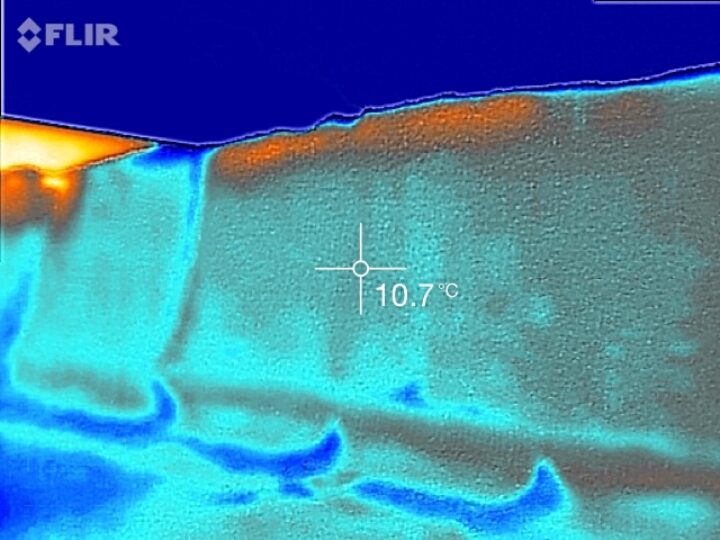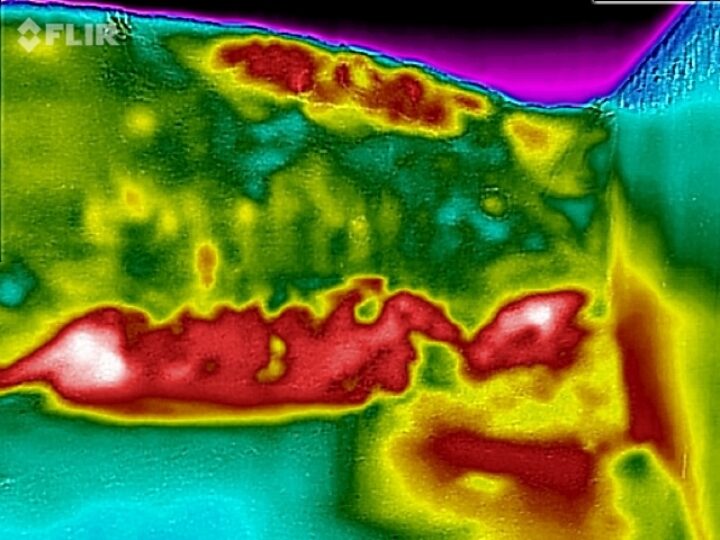
Prevent reheating: Be particularly mindful of silage hygiene in autumn and winter
In autumn and winter, opened silages are especially prone to weather influences. Rain and snow often cause silage surfaces to soil, resulting in hygienically compromised silages (see image on the left). Find useful tips for optimal silage hygiene here.
Tip 1: Clear away removal residue
Remove any loose material from silo faces. Soiled silage residue from previous removals can contaminate the silage stack and cause reheating. Images taken with a thermal imaging camera illustrate this very clearly: The left image shows clean silage, while the image on the right shows silage that has heated due to residue along the silo face.


